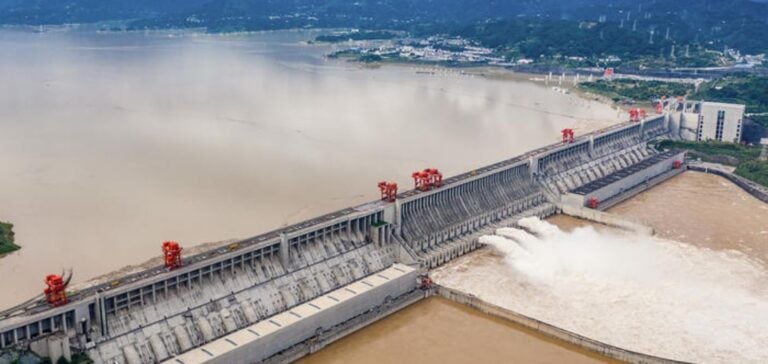Natural gas demand in China in early summer 2024 remained moderate, largely thanks to abundant supply from hydro, coal and renewables, as well as high LNG prices in Asia. Gas-fired power producers generally buy LNG cargoes on the spot market to meet summer demand peaks. However, abundant rainfall in southern China has significantly increased the supply of hydropower, reducing the need for gas-fired generation.
Hydroelectricity on the rise
Hydropower supply in China has exceeded the previous year’s levels, according to the NDRC (National Development and Reform Commission). Electricity imports into Guangdong province, mainly hydroelectricity from Yunnan province, have increased since May, reaching almost 1 TWh per day. In 2023, Yunnan, China’s second-largest hydropower producer after Sichuan, exported around 182.3 TWh of electricity to the southern and eastern coastal provinces. In addition, renewable energy production in China continues to grow. The volume of wind and solar generation is set to increase by more than 25% year-on-year in the third quarter of 2024, according to the CEC (China Electricity Council).
Impact on electricity market prices
The increase in hydropower supply has had an impact on the share of electricity generated from gas and coal on the spot market. Gas- and coal-fired electricity prices recently hovered around Yuan 0.3/kWh, compared with around Yuan 0.4/kWh in April, according to the Guangdong Power Exchange Center. Guangdong, China’s main manufacturing center, had the highest consumption of natural gas, with 38.7 billion cubic meters (Bcm) in 2023, of which around 51% was destined for power generation. Installed capacity of gas-fired power plants in the province will reach 39.55 GW in 2023, representing 31% of the country’s total gas-fired capacity.
High LNG prices curb purchases
In addition to moderate demand for gas-fired electricity, high LNG prices in Asia have also discouraged purchases on the spot market. Chinese LNG importers have not been very active on the Asian spot market in recent months. Pipeline gas prices, at around $10-11/MMBtu, and trucked LNG prices, at around $11-12/MMBtu, are more competitive than imported LNG prices above $12/MMBtu. Pipeline gas imports into China are set to rise by 17% year-on-year, reaching 21.85 million tonnes in the first five months of 2024. The average cost of pipeline gas imports was $7.43/MMBtu, or 32.3% less than the cost of imported LNG over the same period, according to customs data.
Outlook for the Months Ahead
Some analysts believe that it is too early to say that summer demand for natural gas in China is weak. If temperatures rise sharply in July and August, LNG demand could also increase.
China is expected to add 150 GW of new power generation capacity by the end of June, and coal and gas supplies should be sufficient to meet summer demand. However, weather conditions and international market prices will continue to influence LNG purchasing trends in the months ahead.






















